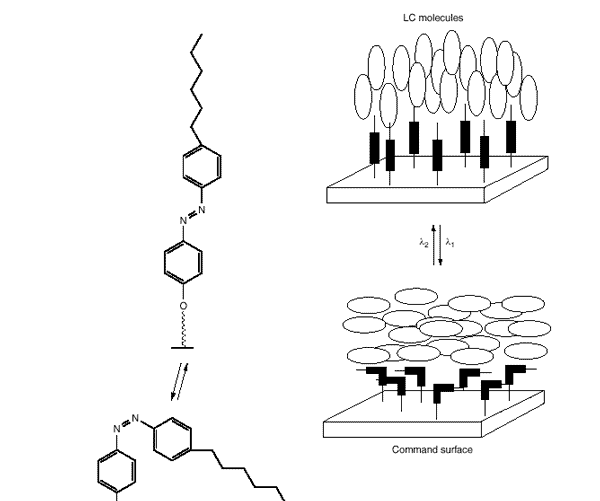
|
波导模工作原理:
What is a waveguide?A waveguide is region with an elevated refractive index as compared to the adjacent media.The layer must have a minimum thickness in order to support waveguide modes. |
|

|
Ray optics:
Light is trapped by the Total Internal Reflection
Field picture:
Light is propagating in well defined modes |
| Excitation of waveguide modes requires a special experimental geometry. One common arrangement uses a prism coated on its base with a thin metal layer. The experiment consists in the measurement of the intensity of the reflected light as a function of the angle of incidence. At certain distinct angles, wave guide modes are excited. The energy of incident light is then partly transferred to the wave guide mode and as a result a minimum in the reflected intensity is observed. The measurement may contain several dips in the reflectivity. Each minimum refers to a to a specific mode with a characteristic field distribution characterized by the number of nodal planes. The different field distributions are schematically sketched in the figure on the left hand side. |
 |
Waveguide modes:
experimental arrangement:
Measure the reflected light as a function of the angle of incidence.
The formation of a waveguide mode shows off as a dip in the reflectivity |
 |
TE modes are determined by ny and thickness t
TM modes are determined by nx , nz, and t
System is over determined n and t are decoupled
Ideally suited for anisotropic system! |
TE modes are only affected by the thickness and the refractive index ny in the direction of the electric field. TM modes are affected only by the thickness, nx and nz, hence polarization dependent measurements are ideally suited for determining the properties of anisotropic samples. This method provides a high accuracy in the determination of the optical parameters of suitable samples.
Further reading:
Literature
Hunsperger
Integrated optics: Theory and Technology
Springer Verlag, Berlin (1991)
Example of our own research:
Photochromic surfaces
It is well known that the orientation of a nematic liquid crystal can be controlled by an interface. In the following papers a nematic liquid crystal was confined within a cell. The surface of the cell was modified by a Langmuir Blodgett film containing azobenzene moieties. Azobenzene posses two distinct conformation and the prevailing conformation can be determined by light. The organization of the bulk phase was determined by the state of of the azobenzene. A cis surface yields an in-plane orientation a trans state a homeotropic orientation of the liquid crystal.
|
 |
Further reading:
Command Surface Controlled Liquid Crystal Waveguide Structures as Optical Information Storage
H. Knobloch, H. Orendi, M. Büchel, T. Seki, S. Ito, W. Knoll
 J. Appl. Phys., 76, 8212 (1994) J. Appl. Phys., 76, 8212 (1994)
Photochromic Command Surface Induced Switching of Liquid Crystal Optical Waveguide Structures
H. Knobloch, H. Orendi, M. Büchel, T. Seki, S. Ito, W. Knoll
 J. Appl. Phys., 77, 481 (1995) J. Appl. Phys., 77, 481 (1995) | |
